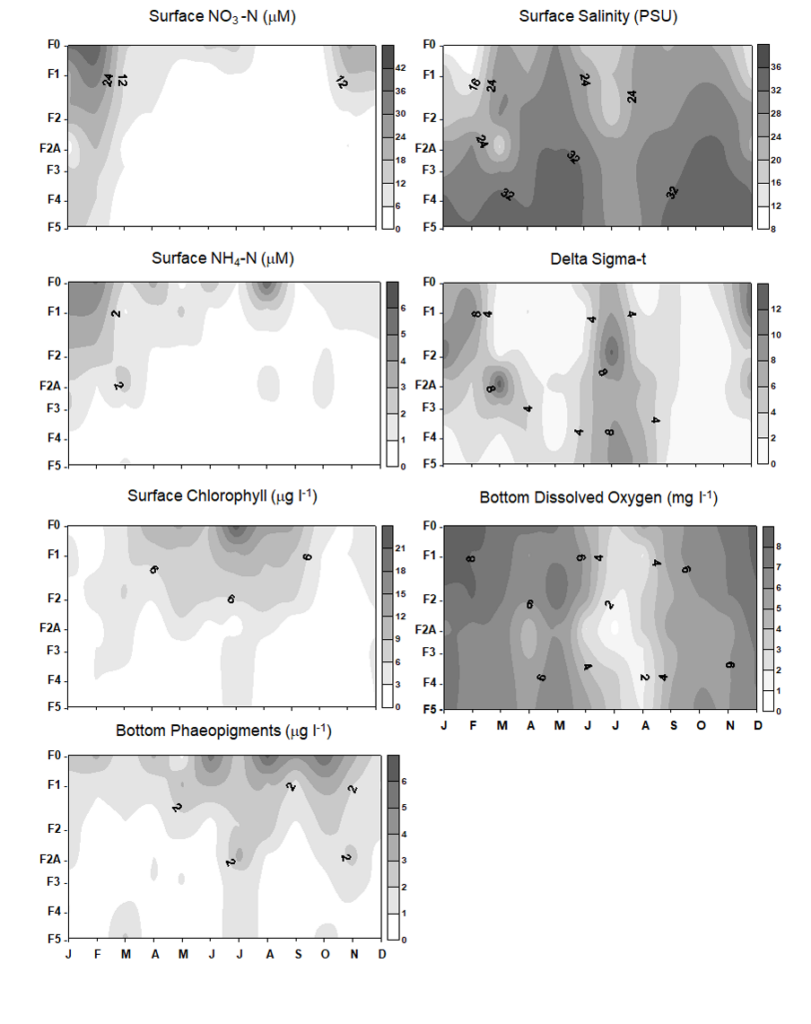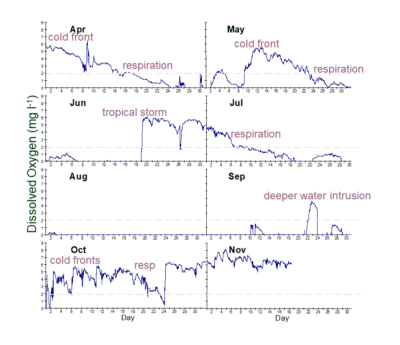Monthly C+F Transects
In order to monitor hypoxia year-round, hydrographic, chemical, and biological sampling was conducted along the C transect monthly since 1990, and intermittently during years 1985-1990, but ended in December 2013. Sampling along the F transect was conducted every other month from 2001 through 2005. Sampling months for the F transect were altered year-to-year so that all months were sampled over the long-term.
Hydrographic data was and still is obtained during summer cruises using the LUMCON SeaBird 911+ CTD system, housed on the R/V Pelican, and a YSI sonde. Data collected includes dissolved oxygen, conductivity, pH, salinity, nutrients, pigments, and suspended sediments.
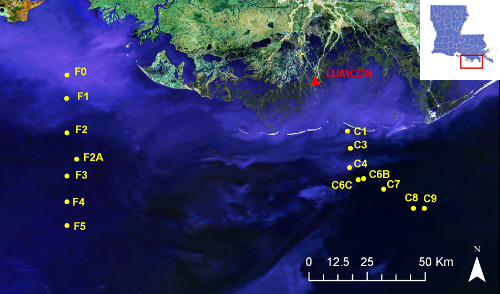
C and F transect locations: The C and F transects were sampled monthly and are located off the southern coast of Louisiana.
Transect C reflects primarily outflow of the Mississippi River, and transect F reflects the outflow of the Atchafalaya River, which carries about one-third of the flow of the Mississippi. The expression of river discharge in surface water salinity is more pronounced on transect C than on transect F, but each shows a spring-summer lowering of salinity across the shelf. The surface dissolved inorganic nitrogen is composed primarily of nitrate-N for both transects with high nearshore concentrations on transect F. Ammonium-N concentrations can be high nearshore on transect F off Atchafalaya Bay.
Higher concentrations of chlorophyll a in surface waters on transect C occur after the winter-early spring peak in nitrate-N. The general pattern for transect F is for higher chlorophyll a in surface waters nearshore to mid transect increasing through spring to maximal concentrations in summer to a decrease in the fall. There is a secondary peak in dissolved inorganic nitrogen in fall followed by higher chlorophyll concentrations on both transects.
Hypoxia occurs from as early as late February through early October and nearly continuously from mid May through mid September on transect C closer to the Mississippi River. Hypoxia there is rare in late fall and winter. The development of hypoxia along transect C occurs earlier in spring compared to transect F in summer and extends into September as opposed to August for transect F.
Moored Time Series
Moored oceanographic instruments have been deployed by our research group on offshore oil rig platforms since 1989 and ended in December 2013. These instruments are designed to collect continuous time-series data at a particular depth. Parameters measured included dissolved oxygen, conductivity, temperature, currents, nutrients, and turbidity. An ADCP (acoustic Doppler current profiler) is an upward pointing current meter that measures direction and speed of currents through the water column. LUMCON scuba divers maintained these instruments until the project ended. Instruments were removed along with their mounts in November 2017.
Prior to December 2013 moored instruments were placed at the following locations (see map):
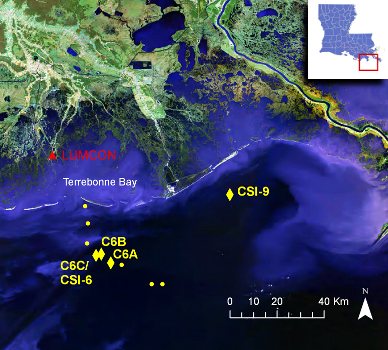
Location of moored stations: Several stations in transect CSI-6 had permanent sampling equipment deployed prior to December 2013
Bottom dissolved oxygen for 2002. The horizontal dashed line at 2 mg l-1 indicates hypoxia. The graphic shows higher oxygen levels following mixing from cold fronts, eventual oxygen depletion as bacteria decompose organic matter and reduce the oxygen levels, prolonged periods of oxygen levels below 2 mg l-1, even anoxia (no oxygen), an intrusion of deeper offshore oxygenated water in September (identified by cooler and saltier water), further mixing of the water column, and re-oxygenation of the bottom water following a series of cold fronts.
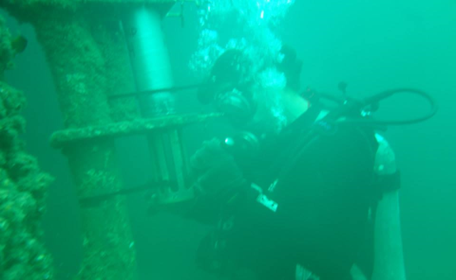
LUMCON diver finalizes the deployment of an oxygen meter. Source: LUMCON

LUMCON diver collects a water sample to cross-calibrate the chlorophyll probe. Source: LUMCON

